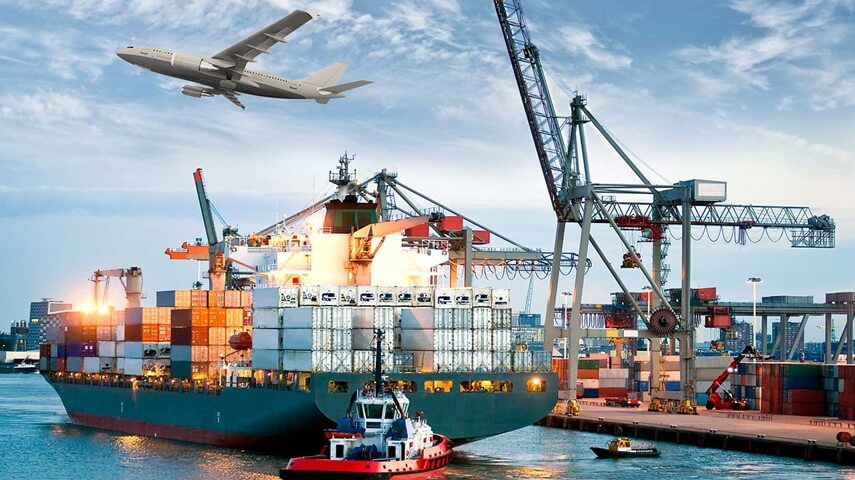Smart Logistics Ecosystem
Logistics is vital to Indonesia’s value chains. Businesses rely heavily on logistics infrastructure to ensure their products reach their customers, so without it, trade and commerce would come to a halt. However, the Covid-19 pandemic has wreaked havoc on Indonesia’s logistics at a time when unrestricted supply chain movement is critical in keeping societies and economies afloat during the ongoing crisis.
Indonesian Logistics is Growing
Indonesia has the largest economy in Southeast Asia, but it is also highly fragmented due to its unique archipelagic geography of 17,000 islands. As a result, logistics operators in the country must use a complex multimodal system (including land and sea freight) to transport goods across the country’s provinces.
This means that resource and time efficiency has been a major challenge for the ecosystem. Yet, more than ever, these efficiencies are needed to re-energize economic sectors that collaborate with logistics actors. While B2C and C2C economic sectors such as e-commerce thrived during the pandemic, they were insufficient to sustain the sector as a whole due to disruptions in more physical industries such as mining and agriculture.
As a result, the logistics industry must transform its operations in order to assist sectors – both digital and physical – in operating with greater supply chain efficiency and productivity. This necessitates a stronger rooting of digitization among the ecosystem’s key actors – namely, transporters, warehouses, and businesses – by leveraging more sophisticated technologies.
Smarter Transportation Systems
Indonesian logistics companies had to navigate an often opaque and unreliable national supply chain network supported by underdeveloped infrastructure and low technological adoption in the domestic industry. Truck fleet operators, for example, must still manually match orders and verify deliveries, or use ad hoc channels such as WhatsApp. When transporters navigate logistical environments, such constraints add additional layers of complexity. Better operational streamlining and transparency through a transportation management system is one solution to help them mitigate these issues (TMS).
A TMS is essentially a piece of software that assists businesses in planning their logistics processes, such as facilitating the movement of goods and optimizing resources to ensure faster freights. It effectively assists transporters in unraveling the intricate web of the supply chain network in order to fulfill deliveries in ways that not only increase customer satisfaction – both end consumers’ and businesses that contract their service. We can gain access to more detailed data insights and analysis by combining a TMS with more advanced technology such as the Internet of things (IoT) and artificial intelligence.
Weight sensors, for example, can be used to detect and alert transporters when there are sudden changes in the load to prevent theft. Another example is a real-time AI routing engine that can automatically route trucks to optimize the delivery process based on the weight of their load and the operating hours of the roads.
Smarter Warehousing
Workers no longer walk around complexes with checklists in hand, identifying and selecting stock, loading it into carts, and handing it over to transporters. Operations in today’s modern warehouse must be made more efficient by automating order receipts and stock confirmation, while robots can assist humans in facilitating faster transport of goods across large complexes.
These are the key components of a warehousing management system (WMS), which connects and collaborates with warehousing technologies within a technological ecosystem to improve a warehouse’s agility (in terms of quickly retooling operations in the face of unprecedented disruptions) and scalability (the greater and more quickly warehouses can receive, manage, and distribute stock, the larger stock volumes they can handle).
However, not all of them work the same way, so warehouse operators must look for those that provide the best data visibility – that is, those that use AI and IoT to transmit, collect, and analyze data in real time – to better guide their decision-making and resource allocation throughout the warehouse complex.
Smarter Businesses
The satisfaction of a company’s customers determines its reputation. If a product is not delivered to the customer on time, the company is frequently at the front of the firing line, regardless of how its transportation and warehousing partners operate. As a result, businesses must take the lead in digital transformation, particularly in how they manage end-to-end logistics between warehouses and transporters.
There are more platforms and solutions available in Indonesia today to help businesses manage their logistics by improving data management, monitoring, and communication with their warehousing and transportation partners. Many of them can also be accessed via mobile apps. This improved connectivity and transparency in smart logistics ecosystems can then help businesses drive down supply chain costs while also making operations more predictable, especially because businesses can gain control that was previously only possible if they owned the entire supply chain infrastructure.
Digitalization alleviates this by allowing businesses to leverage economies of scale by consolidating or deconsolidating goods using their existing warehouse networks, while also improving flexibility and gaining faster market access.
A Watershed Moment in Indonesia’s Smart Logistics Ecosystem
The adaptability of Indonesian logistics companies is now being tested. The transformation of the logistics sector is so important that Indonesia has designated it as a national priority. Even before the pandemic, Indonesia, through ‘Make Indonesia 4.0,’ highlighted the need to digitally transform logistics in order to support the country as it strives for a brighter and more inclusive socioeconomic future.
But they can’t stop there. Greater advancements, such as using IoT to remotely monitor machines and packages, as well as using AI to improve situational analyses, must be ramped up in the post-pandemic environment, where digital transformation will be the new norm.
This seismic ecosystem shift, however, cannot be accomplished in silos; businesses, transporters, and warehouse operators all have a role to play in making logistics in Indonesia smarter. This is not only to better serve their customers in different locations, but also to future-proof their operations in order to remain competitive in the new normal as other players digitize their operations for greater business efficiency and productivity.

